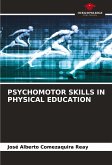Which visualization format is best for communicating dynamic information? What factors need to be taken into account when choosing a format of visualization? Recent studies testing the effectiveness of dynamic against static visualizations have yielded mixed results. However, procedural motor learning is one of the few fields in which dynamic formats have shown to be effective. Many of the studies have suggested that this advantage is mainly due to the activation of the "mirror-neuron system". This research project explores this explanation in physical education domain. First, we tested the impact of dynamic versus static visualizations on overall learning of basketball tactical actions. Second, we tried to identify how varied level of content complexity could affect students' learning when studying depicted basketball tactical actions either in dynamic or static manner. Overall, the results recommend the use of dynamic visualizations during physical education lessons to improve student's comprehension, performance, and subjective experiences when learning basketball tactical actions.








